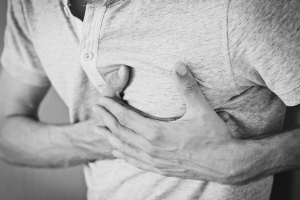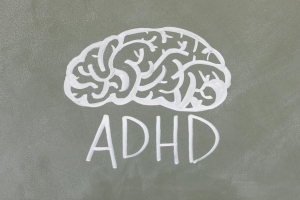cisa
Dry January: Learn How to Reduce Alcohol Consumption
January 23, 2025Dry January: Learn How to Reduce Alcohol Consumption
A campaign launched in the United Kingdom, Dry January, which encourages a month without alcohol, can motivate the adoption of healthier habits.
Year-end celebrations are often accompanied by champagne and followed by hangovers in the days after. In addition to excessive alcohol, it’s also common to overindulge in fatty and sugary foods during this time, which increases health risks and causes many people to start the year not feeling their best. Therefore, January can be a great time to set new goals and objectives for a healthier lifestyle, which may include temporarily stopping alcohol consumption.
The challenge of Dry January is simple: stay sober for all 31 days of the month. Although it is a short period, this change can bring health benefits, especially after the excesses of the holidays.
Main Benefits
Taking a break from alcohol can bring numerous physical and mental benefits, such as better sleep quality, clearer skin, and more energy throughout the day.
These benefits will depend on how much and how often a person drinks. If a person regularly drinks large amounts, a sudden change may cause irritation before they start feeling better. For those who drink less, the benefit is more immediate, with increased energy and improved mood after a few days of sobriety.
Additionally, the break can help with weight loss, reduce blood pressure, and improve liver function.
Challenges
It is increasingly common for people to decide to take periodic breaks from alcohol consumption. These pauses can be important for individuals to assess the role alcohol plays in their lives and make changes if they find their relationship with the substance is unhealthy. However, the break is useless if it is followed by excessive drinking afterward. Some people think that because they went a month without drinking, they can drink as much as they want afterward. This will undo the benefits they achieved. Therefore, maintaining healthy behavior over time is more difficult than the short break itself. For this, more than a month without drinking, discipline, commitment, and willpower are required.
Changing habits abruptly, especially if alcohol consumption is part of one’s routine, is not easy. To support this process, CISA highlights five tips that can make a difference:
- If you’ve decided it’s time to reduce or stop drinking, don’t delay. Set a date and start.
- Share your intention to reduce or stop drinking. This can motivate your family and friends to support you.
- Stay away from places that remind you of alcohol or trigger cravings to drink, such as bars, liquor stores, or the alcohol section of a supermarket. It’s also useful to avoid having alcohol at home.
- Fill your free time with hobbies and activities that don’t involve alcohol.
- Remember that adopting other healthy habits will also help in this process: try to eat well, get a good night’s sleep, exercise, and drink water.
The difficulty in reducing or stopping alcohol consumption will depend on an individual’s personal characteristics, how much they typically drink, and whether they already experience emotional, physical, or interpersonal complications from alcohol use. If difficulties arise during this process, seeking help from a trusted healthcare professional for a detailed assessment is recommended.
Holiday Heart Syndrome: The Impact of Excessive Alcohol Consumption on Cardiac Arrhythmias
January 23, 2025Holiday Heart Syndrome: The Impact of Excessive Alcohol Consumption on Cardiac Arrhythmias
Studies indicate that excessive alcohol consumption is directly linked to cardiac arrhythmias such as atrial fibrillation (AF) (1). Understand how this affects young and healthy individuals and the challenges in treatment.
Excessive alcohol consumption has complex effects on cardiovascular health, influencing the risk of conditions such as hypertension, coronary artery disease, stroke, peripheral artery disease, and cardiomyopathy. These associations are shaped by various factors, including behavioral, genetic, and biological variations. Additionally, the dose and pattern of alcohol consumption also seem to play a crucial role in modulating this relationship (2). Consuming five or more drinks within a two-hour period can have serious health consequences, including for the heart.
"Holiday Heart Syndrome" (HHS) is named for its association with the occurrence of cardiac arrhythmias triggered by episodes of excessive alcohol consumption, which often occur during weekends and holidays, periods marked by increased relaxation and celebrations. Atrial fibrillation (AF) is the most commonly diagnosed arrhythmia among patients with HHS. AF is widely known for increasing the risk of morbidity and mortality, primarily due to strokes (CVA) and heart failure, representing a significant burden on healthcare systems.
Atrial fibrillation caused by excessive alcohol consumption occurs due to various mechanisms that disrupt the heart's functioning. Alcohol can interfere with calcium regulation inside cardiac cells, disrupting its release and causing electrical changes that may lead to irregular heartbeats (3). Additionally, a hangover increases the activity of the nervous system, making the heart more sensitive and decreasing the time it needs to recover between beats, which facilitates arrhythmias (4). Alcohol also causes the loss of important electrolytes due to its diuretic effect and can damage heart cells through the accumulation of toxic substances, contributing to the development of AF (5).
Treatment of Holiday Heart Syndrome goes beyond initial stabilization in the emergency room. It is essential to understand the reasons behind excessive alcohol consumption, and evaluation with a mental health professional is recommended. Reducing the effects of alcohol consumption can only be achieved with the collaboration of a well-coordinated interdisciplinary team (6).
References:
- Voskoboinik A, Prabhu S, Ling LH, Kalman JM, Kistler PM. Alcohol and Atrial Fibrillation: A Sobering Review. J Am Coll Cardiol. 2016 Dec 13;68(23):2567–76.
- Piano M. R. (2017). Alcohol's Effects on the Cardiovascular System. Alcohol research : current reviews, 38(2), 219–241.
- Yan, J., Thomson, J. K., Zhao, W., Gao, X., Huang, F., Chen, B., Liang, Q., Song, L. S., Fill, M., & Ai, X. (2018). Role of Stress Kinase JNK in Binge Alcohol-Evoked Atrial Arrhythmia. Journal of the American College of Cardiology, 71(13), 1459–1470. https://doi.org/10.1016/j.jacc.2018.01.060
- Marcus, G. M., Dukes, J. W., Vittinghoff, E., Nah, G., Badhwar, N., Moss, J. D., Lee, R. J., Lee, B. K., Tseng, Z. H., Walters, T. E., Vedantham, V., Gladstone, R., Fan, S., Lee, E., Fang, C., Ogomori, K., Hue, T., Olgin, J. E., Scheinman, M. M., Hsia, H., … Gerstenfeld, E. P. (2021). A Randomized, Double-Blind, Placebo-Controlled Trial of Intravenous Alcohol to Assess Changes in Atrial Electrophysiology. JACC. Clinical electrophysiology, 7(5), 662–670. https://doi.org/10.1016/j.jacep.2020.11.026
- Tonelo, D., Providência, R., & Gonçalves, L. (2013). Holiday heart syndrome revisited after 34 years. Arquivos brasileiros de cardiologia, 101(2), 183–189. https://doi.org/10.5935/abc.20130153
- Jain A, Yelamanchili VS, Brown KN, et al. Holiday Heart Syndrome. [Updated 2024 Jan 16]. In: StatPearls [Internet]. Treasure Island (FL): StatPearls Publishing; 2024 Jan-. Available from: https://www.ncbi.nlm.nih.gov/books/NBK537185/
"Know Your Numbers": An Approach to Reduce Heavy Alcohol Consumption in Young Adults
January 23, 2025"Know Your Numbers": An Approach to Reduce Heavy Alcohol Consumption in Young Adults
A recent study highlights that, although the "Know Your Numbers" (KYN) model has the potential to raise awareness about alcohol consumption, more prolonged and robust interventions are necessary to significantly impact young adults.
Harmful alcohol consumption, such as binge drinking, is a common issue among young adults, and current interventions like individual therapeutic programs, brief interventions, and modifying expectations regarding alcohol use have shown positive, albeit modest, effects. In general, research on current interventions suggests that there is little significant long-term behavioral change.
A promising alternative is the "Know Your Numbers" (KYN) model, successfully used to modify risk behaviors in campaigns related to cardiovascular diseases, such as American Heart Association´s campaigns. In this model, providing quantitative feedback, such as cholesterol levels, has been shown to be effective in raising awareness. However, no study has yet combined the KYN model with alcohol biomarkers (such as PEth—a blood biomarker for alcohol consumption, known as phosphatidylethanol) and AUDIT (Alcohol Use Disorders Identification Test) scores to create a quantitative risk indicator related to alcohol consumption.
A recent study evaluated the feasibility, acceptability, and preliminary effectiveness of a four-week intervention based on the KYN model to motivate young adults to reduce dangerous levels of alcohol consumption. The main hypothesis proposed that awareness of AUDIT values and PEth levels would encourage positive behavioral changes. The goals included evaluating recruitment and retention strategies, examining the impact of the intervention on motivation for change, and measuring its preliminary effectiveness in reducing alcohol consumption. Additionally, the study aimed to analyze the acceptability of the KYN approach through focus groups (sessions where participants discuss their experiences with the intervention to provide qualitative feedback), which also offered suggestions for improvement.
Ninety-four young adults aged 18 to 30 who reported binge drinking in the past month were recruited. Participants with specific conditions, such as psychiatric treatment, a history of substance dependence, pregnancy, BMI over 30, or seizure disorders, were excluded. Overall, the strategy was effective, with 82.26% of individuals recruited and 76.9% retained after four weeks.
During the intervention, participants received personalized feedback based on PEth levels and AUDIT scores. A subgroup participated in reinforcement sessions after two weeks, and focus groups were held at the end to evaluate the experience. Motivation for change was measured by the Alcohol Contemplation Ladder, which showed a significant 62% increase (p < 0.001) from the beginning to the end of the intervention. However, despite this, many participants still showed indecision about changing behaviors. There was also a significant reduction in AUDIT scores, with 61% of participants reducing at least one point. Furthermore, the proportion of drinkers classified as "low risk" increased from 18% to 33%. However, there were no significant changes in average PEth levels, although 38% of participants reduced their consumption levels. Additionally, the frequency and intensity of binge drinking episodes remained unchanged.
Focus groups identified three main themes: satisfaction with the quantitative model, the need for more information about the risks associated with alcohol consumption, and a desire for a better understanding of PEth levels and their relationship to behavior. These results highlight the acceptance of the KYN model, which was considered feasible and met recruitment and retention goals. However, objective outcomes, such as reductions in binge drinking and changes in biomarkers, were limited. Factors such as the short duration of the intervention, seasonality, and participants' difficulty in understanding biometric data may have influenced the results, according to the article.
In conclusion, the KYN approach showed promise in raising awareness about alcohol consumption among young adults. It is important to note that longer and more robust interventions are necessary to achieve a greater impact on biomarkers and reduce binge drinking. The study authors recommend conducting randomized studies lasting 6 to 8 weeks and using technologies like real-time tracking apps, in addition to integrating behavioral strategies, such as goal setting and personalized reminders. They also emphasize that translating biometric data into practical and accessible actions is essential to increase the effectiveness of this approach for the young adult population.
References:
Piano, M. R., Hwang, C.-L., Adair, M., Muhimpundu, S., Dietrich, M. S., & Phillips, S. A. (2024). A pilot study of a quantitative approach to reduce binge drinking in young adults: Know your numbers. Journal of Studies on Alcohol and Drugs, 85(6), 788–793.
New Considerations on the Treatment of Alcohol Use Disorder: Problems and Solutions
January 23, 2025New Considerations on the Treatment of Alcohol Use Disorder: Problems and Solutions
A recent study (1) suggests that alcohol use disorder (AUD) remains underdiagnosed, despite the availability of effective therapies and medications. Key points highlighted include addressing stigma, improving screening, and investing in new approaches to increase access to treatments.
Alcohol use disorders (AUDs) are a large-scale public health issue, affecting more than 29 million people in the United States and leading to over 140,000 deaths annually. The most severe form of these disorders is alcoholism. It is described by a heuristic model encompassing three interconnected stages: heavy drinking/intoxication, withdrawal/negative affect, and concern/anticipation. This model provides a framework to understand the complexity of the disorder and its various manifestations in relation to treatment.
Defined as a chronic and recurring disorder, alcoholism is characterized by compulsive consumption, loss of control, and negative emotional states in the absence of alcohol. AUDs are classified as mild, moderate, or severe. In the neurobiological realm, AUDs involve three main domains: incentive salience/pathological habits, negative emotional states, and executive function, which are linked to the activation of brain circuits such as the basal ganglia, extended amygdala, and prefrontal cortex. The article also highlights that excessive alcohol consumption deregulates the brain's reward system and alters stress systems, reinforcing the cycle of dependence.
Despite the existence of effective treatments, such as behavioral interventions and approved medications, these resources remain widely underused, highlighting the need for actions to address existing gaps, including broadening the criteria for medication approval, increasing the use of screening and brief interventions, combating stigma, defining a clear and culturally sensitive “recovery” criterion, and promoting both public and professional education.
Evidence-based treatments include a wide range of behavioral therapies, such as cognitive-behavioral therapy, motivational interviewing, acceptance/mindfulness-based approaches, and the 12-step approach, used by mutual aid groups like Alcoholics Anonymous. Combining therapies and medications enhances treatment efficacy, helping to modify alcohol-related attitudes and behaviors.
Among FDA-approved medications, disulfiram, naltrexone, and acamprosate stand out for their different methods of reducing consumption and promoting abstinence. While disulfiram causes severe adverse reactions to alcohol consumption to create unpleasant sensations during drinking, but also making adherence to treatment more difficult, naltrexone blocks the rewarding effects of alcohol; both have proven efficacy in reducing excessive consumption. Acamprosate, on the other hand, helps maintain abstinence by alleviating severe withdrawal symptoms. Additionally, repurposed “off-label” medications such as topiramate and gabapentin also show efficacy, reducing excessive consumption and aiding sleep initiation and maintenance.
Despite the proven effectiveness of treatments, fewer than 8% of adults with AUD receive any form of intervention, and less than 2% have access to approved medications. Significant barriers, such as a lack of public policies, inadequate screening, and stigma, further hinder access. Although the SBIRT model (Screening, Brief Intervention, and Referral to Treatment) is effective for early detection, it remains underused and still rarely implemented by healthcare professionals, whether in public or private systems. Additionally, the lack of appropriate facilities, delays in the approval of new medications, and insufficient investment by the pharmaceutical industry in developing addiction treatments compared to other areas represent additional challenges.
The stigma associated with AUD is particularly damaging, as individuals with this disorder often face judgment that holds them accountable for their condition, which negatively impacts their willingness to seek help. This contributes to fewer than 1 in 10 individuals with AUD receiving treatment annually, while about 20% avoid seeking help due to the fear of being stigmatized. Stigma also affects patients in need of liver transplants and can limit participation in clinical trials due to prejudice.
The article emphasizes that, to address these challenges, it is essential to develop a variety of treatments that recognize individual responses to different approaches, whether behavioral therapies or medications. The definition of recovery has been refined to include not only the remission of AUD but also the cessation of excessive alcohol consumption and biopsychosocial well-being. Early diagnoses and interventions at the initial stages of AUD can prevent its progression to more severe forms, while educational resources such as the Healthcare Professional’s Core Resource on Alcohol and platforms like Rethinking Drinking offer tools to raise awareness among healthcare professionals and the general public.
Finally, the three-stage model of AUD highlights intervention targets at each stage, with assessments covering executive function, incentive salience, and negative emotionality, allowing for more personalized treatments. Research to identify new targets for medications and overcome challenges in the pharmaceutical industry is crucial to driving the development of new treatment options. This approach proposes a more comprehensive neuroscientific understanding, aiming to offer individualized and effective treatments.
References:
- Divya Ayyala-Somayajula, Jennifer L. Dodge, Adam M. Leventhal, et al. Trends in Alcohol Use After the COVID-19 Pandemic: A National Cross-Sectional Study. Ann Intern Med. [Epub 12 November 2024]. doi:10.7326/ANNALS-24-02157
Use of Stimulants in the Treatment of ADHD and the Risks of Alcohol Consumption
Stimulants include both prescribed medications and illicit drugs. They act on the central nervous system (CNS), increasing its activity by interacting with neurotransmitters such as dopamine and norepinephrine. These effects promote greater alertness, energy, and focus (1).
Prescribed stimulants, such as dextroamphetamine, methylphenidate, and lisdexamfetamine, may be indicated for the treatment of ADHD (attention-deficit/hyperactivity disorder) and narcolepsy. Although effective, they can cause various adverse effects. Among the most common are sleep problems, reduced appetite, weight loss, increased heart rate and blood pressure, irritability, mood swings, and, in more severe cases, aggression or muscle tremors (1).
Many individuals mix these substances with alcohol in an attempt to enhance euphoria or reduce the unwanted side effects of alcohol (2). However, the interaction between stimulants and alcohol can mask alcohol intoxication, leading to excessive alcohol consumption. Additionally, it amplifies cardiovascular effects, such as elevated blood pressure, increased heart rate, and a higher risk of arrhythmias and heart attacks (3).
For individuals with ADHD, studies suggest that proper treatment with prescribed stimulants can reduce the risk of alcohol and substance abuse disorders (4). This protective effect occurs because individuals with ADHD often exhibit greater impulsivity and a dysregulated reward system, characteristics that increase the likelihood of seeking immediate relief through risky behaviors, such as alcohol and drug use (5).
Although the risks associated with mixing alcohol and stimulants for ADHD treatment are already known, there is still a need for further studies to fully understand the interaction mechanisms between these substances and their long-term consequences. Future research may help clarify these effects and contribute to more effective strategies for the prevention and management of patients using these medications.
References:
- Farzam K, Faizy RM, Saadabadi A. Stimulants. [Updated 2023 Jul 2]. In: StatPearls [Internet]. Treasure Island (FL): StatPearls Publishing; 2024 Jan-. Available from: https://www.ncbi.nlm.nih.gov/books/NBK539896/
- Barrett, S. P., & Pihl, R. O. (2002). Oral methylphenidate-alcohol co-abuse. Journal of clinical psychopharmacology, 22(6), 633–634. https://doi.org/10.1097/00004714-200212000-00020
- Barkla, X. M., McArdle, P. A., & Newbury-Birch, D. (2015). Are there any potentially dangerous pharmacological effects of combining ADHD medication with alcohol and drugs of abuse? A systematic review of the literature. BMC psychiatry, 15, 270. https://doi.org/10.1186/s12888-015-0657-9
- Hammerness, P., Petty, C., Faraone, S. V., & Biederman, J. (2017). Do Stimulants Reduce the Risk for Alcohol and Substance Use in Youth With ADHD? A Secondary Analysis of a Prospective, 24-Month Open-Label Study of Osmotic-Release Methylphenidate. Journal of attention disorders, 21(1), 71–77.
- Luderer, M., Ramos Quiroga, J. A., Faraone, S. V., Zhang James, Y., & Reif, A. (2021). Alcohol use disorders and ADHD. Neuroscience and biobehavioral reviews, 128, 648–660. https://doi.org/10.1016/j.neubiorev.2021.07.010
Harmful Alcohol Consumption After the COVID Pandemic: A Problem Still Unsolved
A recent study points out that the increase in alcohol consumption observed during the COVID-19 pandemic persisted into 2022, highlighting possible long-lasting effects related to stress and behavioral changes.
Harmful alcohol consumption is one of the leading preventable causes of morbidity and mortality in the United States and many other countries. During the COVID-19 pandemic, an increase in alcohol consumption associated with stress and a rise in alcohol-related deaths were recorded. Previous studies have documented these impacts, but there was, and still is, a need to assess whether the patterns of increased consumption persisted after the pandemic. Additionally, analyzing trends among subpopulations can guide public policies and health initiatives to reduce alcohol-related morbidity and mortality.
A recent study (1), published in November 2024, aimed to determine whether the increase in alcohol consumption observed during the pandemic (2020, compared to 2018) was maintained in 2022, after the most severe pandemic period. To this end, cross-sectional data from adults (≥18 years) participating in the National Health Interview Survey (NHIS) between 2018 and 2022 were used. This nationally representative survey uses complex sampling to reflect the U.S. population—24,965 participants in 2018, 30,829 in 2020, and 26,806 in 2022. It is worth highlighting that the main outcomes evaluated were alcohol consumption in the past year and excessive consumption, defined by the National Institute on Alcohol Abuse and Alcoholism (NIAAA) as five or more drinks on a day (or ≥15 drinks per week) for men and four or more drinks on a day (or ≥8 drinks per week) for women.
The main finding of the study was that alcohol consumption increased both in 2020 and in 2022 compared to 2018. Looking at alcohol consumption in the past year, there was an increase of 2.69% in 2020 and 2.96% in 2022. For excessive consumption, there was an increase of 1.03% in 2020 and 1.18% in 2022. These increases were observed across most population groups, except among Native Americans and Asians.
The results suggest that the increase in alcohol consumption during the pandemic was not temporary, but remained high and continued to grow in 2022. This may be related, according to the study’s authors, to the prolonged stress caused by the pandemic, the persistence of changes in people’s habits, and difficulties accessing healthcare services during this period. Despite some limitations, such as the exclusion of military or institutionalized populations and potential inaccuracies in participants' responses, the data provides a clear insight into a public health issue. The study reinforces the need to closely monitor alcohol consumption patterns and their impacts.
Finally, it can be concluded that the increase in alcohol consumption during and after the COVID-19 pandemic represents a serious issue that requires attention. It is necessary to expand access to screening services to identify harmful consumption, improve psychological support within healthcare systems, and promote community actions to assist the most vulnerable individuals. These measures can help reduce the public health impacts associated with the rise in alcohol consumption since the pandemic—a still unresolved problem.
References
- Divya Ayyala-Somayajula, Jennifer L. Dodge, Adam M. Leventhal, et al. Trends in Alcohol Use After the COVID-19 Pandemic: A National Cross-Sectional Study. Ann Intern Med. [Epub 12 November 2024]. doi:10.7326/ANNALS-24-02157
Can Physical Exercise Cure Alcoholism?
December 19, 2024Can Physical Exercise Cure Alcoholism?
Physical activity has shown benefits for both physical and mental health in individuals with alcohol use problems. A study points to an increase in substances associated with pleasure and well-being, reducing the harmful effects of alcohol use.
A recent study, published in the scientific journal PLoS ONE, sought to compile the results of highly reliable clinical research that involved physical exercise interventions for patients with Alcohol Use Disorder (AUD). The authors aimed to provide stronger evidence on ways to treat alcohol dependence and the physical and mental health of this patient group.
The survey included only randomized clinical trials with patients diagnosed with AUD or post-traumatic stress disorder (PTSD) with symptoms of AUD. To be included in the survey, studies needed to compare "experimental groups" that underwent exercise interventions, with variations in type, intensity, and duration, against "control groups" that did not perform exercises.
The outcomes analyzed in the studies included the number of daily and weekly alcohol doses, questionnaires for alcohol consumption identification, aerobic capacity (VO2max), resting heart rate, symptoms of anxiety, depression, and stress, with interventions varying between aerobic exercises, resistance training, yoga, and combinations of these approaches, lasting from 3 to 24 weeks.
The survey obtained interesting results, with evidence highlighting that physical exercise had positive effects on daily alcohol consumption, with a significant reduction in the number of daily doses, but no impact on weekly consumption. There was also a significant reduction in the scores of the Alcohol Use Disorders Identification Test (AUDIT), indicating an improvement in alcohol use patterns.
Regarding physical and psychological effects, exercise increased VO2max and improved resting heart rate, as well as significantly reducing anxiety, depression, and stress levels. The subgroup analysis indicated that mixed exercises and an intervention duration of up to 12 weeks were effective in reducing anxiety.
Despite the interesting and promising results, one limitation identified was the assessment of risk of bias, as this raised concerns in 53% of the studies, particularly regarding the lack of blinding in the interventions, meaning participants and researchers knew which group they were in, which may have influenced the results.
References:
Li J, Zhou Z, Gao G, Zang L (2024) Effectiveness of exercise intervention in improving physical and mental status of patients with alcohol use disorders: A systematic review and metaanalysis. PLoS ONE 19(10): e0311166. https://doi.org/10.1371/journal.pone.0311166
Dangerous Mix: The Risks of Alcohol Use with Zolpidem
December 19, 2024Dangerous Mix: The Risks of Alcohol Use with Zolpidem
The concurrent use of alcohol and Z drugs, such as zolpidem, presents significant health risks, especially concerning effects on the central nervous system and an increase in risky behaviors.
The so-called Z drugs are a class of medications widely used for the short-term treatment of insomnia and other sleep disorders (1). This term encompasses drugs like zolpidem, zopiclone, and eszopiclone, which were developed as alternatives to benzodiazepines, offering a sedative-hypnotic effect with lower risks of dependence and side effects. They are called Z drugs because of the initial letter of their main names, making it easier to refer to the class of non-benzodiazepine hypnotics aimed at sleep.
The mechanism of action of Z drugs involves the selective stimulation of GABA-A receptors in the brain, promoting a calming and hypnotic effect. This occurs through the amplification of GABA neurotransmitter activity, which inhibits neuronal excitability and induces sleep (2). Although effective, these substances carry risks, especially when combined with others that depress the central nervous system, such as alcohol.
The concurrent use of alcohol and Z medications, like zolpidem, presents significant health risks. According to the FDA, the combined use can result in excessive sedation, coordination difficulties, and in extreme cases, complex behaviors during sleep, such as walking, driving, or performing other activities while unconscious. Additionally, there is an elevated risk of respiratory depression and other serious effects, as alcohol enhances the sedative effects of Z drugs (3).
Activities requiring full attention, such as driving, should be avoided after using these medications, and combined use with alcohol should be avoided to reduce the risks of severe adverse effects, such as sleepwalking and amnesia. People with a history of substance abuse should be evaluated with caution before prescribing these drugs (3). To minimize risks, ANVISA (Brazilian Health Regulatory Agency) has recently changed the prescription requirements for zolpidem and other Z drugs, making it stricter due to the risk of dependence and abuse associated with these substances (4). Thus, it is essential that the use of these medications be strictly controlled, with restrictions on their short-term use, continuous medical supervision, and guidance on the risks of concurrent alcohol use.
References:
- FDA Label for Ambien®. Drugs@FDA. https://www.accessdata.fda.gov/drugsatfda_docs/label/2008/019908s027lbl.pdf
- Neumann, E., Rudolph, U., Knutson, D. E., Li, G., Cook, J. M., Hentschke, H., Antkowiak, B., & Drexler, B. (2019). Zolpidem Activation of Alpha 1-Containing GABAA Receptors Selectively Inhibits High Frequency Action Potential Firing of Cortical Neurons. Frontiers in pharmacology, 9, 1523. https://doi.org/10.3389/fphar.2018.01523
- Taking Z-drugs for Insomnia? Know the Risks. U.S. Food and Drug Administration. September 9, 2020. https://www.fda.gov/consumers/consumer-updates/taking-z-drugs-insomnia-know-risks
- Agência Nacional de Vigilância Sanitária. (2024, 17 de abril). Medicamento zolpidem terá alteração no tipo de receita para prescrição e venda.
New Fiocruz Study Analyzes the Cost of Alcohol Consumption in Brazil
November 22, 2024New Fiocruz Study Analyzes the Cost of Alcohol Consumption in Brazil
A new study reveals that alcohol consumption in Brazil generates up to R$18.8 billion in annual costs, highlighting the urgency for preventive policies.
The study (1), conducted by the Oswaldo Cruz Foundation (Fiocruz), aimed to estimate the economic costs of alcohol consumption in Brazil, addressing both direct and indirect costs to society. Using public health data and scientific literature, the research estimated the financial impacts of alcohol consumption in the country in 2019.
The key findings indicated that the total costs attributable to alcohol consumption ranged from R$10.1 billion to R$18.8 billion. These costs were divided into direct costs, such as hospitalizations and outpatient procedures, which ranged from R$483 million to R$1.1 billion, and indirect costs, estimated between R$9.7 billion and R$17.7 billion, which include lost productivity due to absenteeism, premature deaths, and social security expenditures. Additionally, alcohol-attributable deaths were estimated to range from 47,900 to 104,800 in the year.
Another key point in the analysis is the increasing prevalence of alcohol consumption among Brazilians, with a sharp rise among women and an early onset during adolescence, leading to a significant burden of disease and death. Cardiovascular diseases, cancers, and alcohol-related accidents are some of the leading causes of hospitalizations and alcohol-attributable deaths. To support these points, the study uses data from the 2019 PNS (National Health Survey), Vigitel, Datasus, and the World Health Organization (WHO). It is important to highlight that these data on the increasing alcohol consumption over the years are significant, even though this study focused only on 2019. Thus, the cost analysis is framed under the perspective that such expenditures are likely to continue to rise.
The study presents several limitations related to the statistical model used, but these limitations, given the available data, incorporate the best evidence and approximations to adjust the analysis to the Brazilian population. Another point is that the morbidity and mortality data were obtained from Datasus, the Ministry of Health database, which may underestimate the actual scale of alcohol-related problems, especially in cases where alcohol may not be recorded as the direct cause of hospitalization. In terms of costs, the direct cost of primary health care and family expenses could not be estimated, and the indirect cost of variables such as "presenteeism" was also not included. Despite these limitations, it should be emphasized that the analysis is robust and supported by scientific literature.
In summary, the findings highlight a significant economic and social burden from alcohol consumption in Brazil, suggesting the need for public policies to control harmful use, such as those presented by the WHO in 2018 through the SAFER initiative.
References:
- Nilson, E. Estimação dos custos diretos e indiretos atribuíveis ao consumo de álcool no Brasil. Fiocruz, 2024.
The Shame of Sobriety: Sober Shaming and Its Impact on Mental Health
November 22, 2024The Shame of Sobriety: Sober Shaming and Its Impact on Mental Health
Drinking alcohol is undoubtedly an important part of Western culture, commonly used for celebrating, comforting, socializing, relaxing, and even coping with problems. However, its harmful use is associated with various diseases and health issues, being responsible for the deaths of thousands of people each year.
Although abusive alcohol consumption is still prevalent in Brazil, data shows that the country is following the global trend of a decline in alcohol consumption among young people. This means that more individuals are reconsidering their relationship with alcohol and deciding to reduce or stop drinking. However, for many of them, this decision has not been well received by those around them.
Sober Shaming — the act of shaming or embarrassing someone for deciding not to drink—is a concept that emerged around 2021 through a campaign by the UK-based NGO Alcohol Change UK, and has gained traction in recent years, reinforced by the global trend of reduced alcohol consumption among the younger generation.
Sober shaming can occur subtly when someone asks, "Why aren't you drinking?" or more directly when a person is accused of being "boring" for not drinking, for example. The mere fact of having to justify why one doesn't want to drink is already an example of this social pressure. This can lead people to completely avoid situations involving alcohol or withdraw to prevent negative social consequences (1).
Alcohol is the most commonly used social lubricant. It lowers defenses, makes barriers more porous, and filters more transparent. For this reason, in many cultures, alcohol has become synonymous with fun, and reducing consumption is often associated with boredom and frustration. In this way, sober shaming is part of the persistent belief that it is impossible to have fun without alcohol.
Drinkers may also feel criticized when someone decides to stop or moderate their drinking. A study (2) showed that alcohol drinkers feel judged about their consumption by non-drinkers. As a result, non-drinkers can be seen as a threat during social events.
However, there is a difference in the pressure that men and women face regarding alcohol consumption. Literature findings show that men face more pressure to drink than women, and for women, it is easier to find socially accepted reasons to not drink or to moderate their consumption (3). For men, alcohol consumption is often associated with masculine traits. Drinking large amounts while maintaining self-control is seen as a sign of virility. On the other hand, for women, excessive drinking can be culturally viewed as shameful or immoral, which reduces the pressure to consume.
The stigmatization of sobriety can manifest itself in various ways, such as associating abstinent individuals with negative traits ("boring," "square," "weak") or creating fear of social consequences (for example, not being invited to certain events). In the worst cases, a non-drinker may even be excluded from their social circle (1).
People may not be aware that they are practicing sober shaming, and many do not do it intentionally, seeing it as a joke. However, this behavior can still be very harmful—especially in combination with all the messages that suggest drinking is "normal" and not drinking is not.
By practicing sober shaming, we are telling people that their decision to not drink is not valid, contributing to a culture that isolates and marginalizes those who abstain from alcohol. This practice can have a negative impact on the mental and emotional health of individuals. Instead, we can show respect and support for those who have made this decision. Ending sober shaming can contribute to more people making healthy choices.
References:
- Bayoumy AB, Van de Grift A. Haal alcoholonthouding uit de taboesfeer [Break the taboos on alcohol abstinence: is it time for the #StopSoberShaming initiative in the Netherlands?]. Ned Tijdschr Geneeskd. 2023 May 23;167:D7484. Dutch. PMID: 37257118
- Emslie C, Hunt K, Lyons A. Mais velho e mais sábio? Relatos de homens e mulheres sobre o consumo de álcool no início da meia-idade. Illn de Saúde Social. 2012;34:481-96. doi:10.1111/j.1467-9566.2011.01424.x . Medline
- Paton-Simpson G. Beber socialmente obrigatório: uma análise sociológica das normas que regem os níveis mínimos de consumo. Problema de drogas contemporâneas. 2001;28:133-77. doi:10.1177/009145090102800105.











